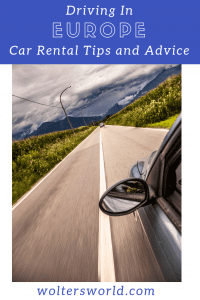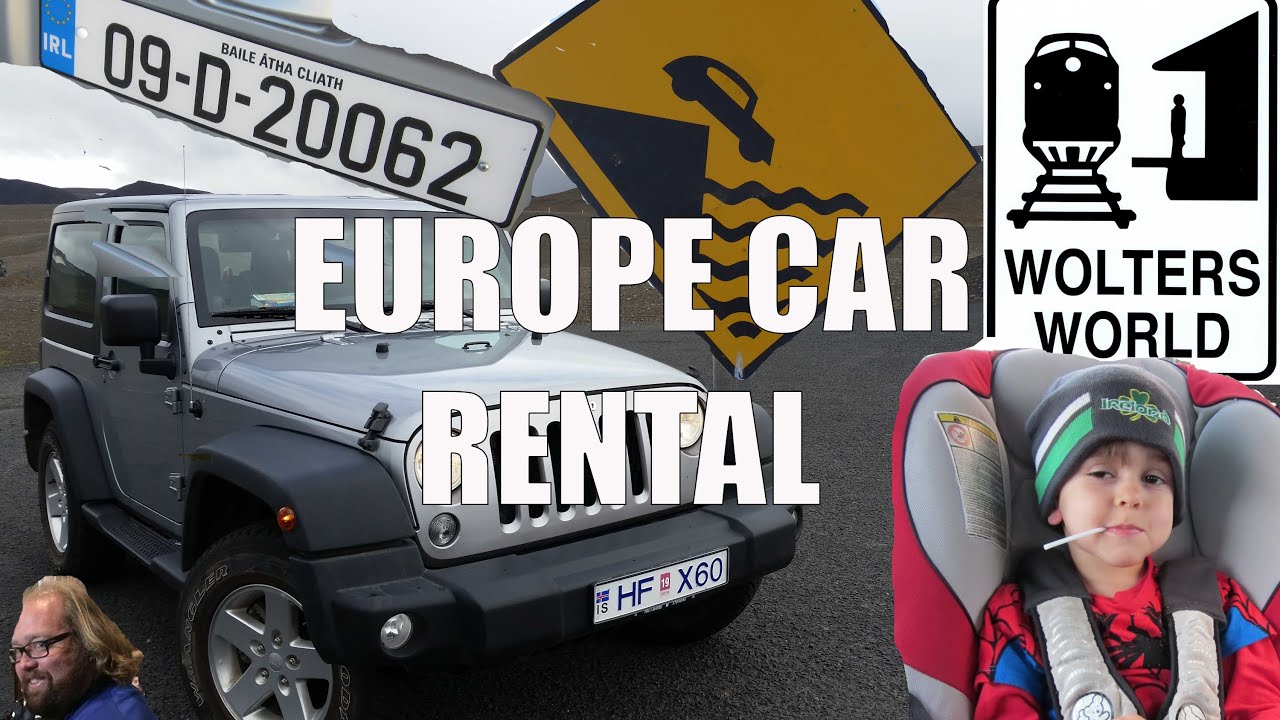Driving in Europe: Tips for European Car Rental
Bonjour from Avignon, France! We have been driving around Provence, which is a beautiful area of France. However, you really need a car to get around Provence, which prompted us to think about the things travelers should know when renting a car in Europe. Here are our tips and advice for renting a car in Europe, as well as for driving in Europe.

Roads Are Narrower Than in the U.S.
Roads in Europe are much smaller than what we are used to in the U.S. There are fewer 4-lane mega highways or extra passing lanes, and just generally smaller roads.
Cars Are Smaller Than in the U.S.
Along with smaller roads comes smaller cars, and smaller trunks. Most rental cars in Europe will be manual transmission. Automatic transmission may be available, but will incur a premium charge. With a smaller trunk, it will be difficult to put several large suitcases in the car. Be prepared for this, and try to pack as light as possible.
There is Always Traffic
The U.S. has large swaths of land with no other traffic to speak of. In Europe, there are almost always other drivers around, and often a lot of traffic. This means you won’t find any cruise control on European rental cars, because there are few places you could actually use it.

Multiple Global Chains & Local Companies Offer Car Rental in Europe
Check around a bit before your trip. You can rent from the global chains you know, like Hertz or Enterprise, or Europcar. The smaller, local companies usually have better deals, but lack all of the extra coverage you would expect from the larger companies. If you are visiting Europe with kids, make sure you reserve a car seat with the car, or bring your own. The GPS is also well worth the expense. Make sure you have the rental agency set the language to English before you drive off.
Make Sure You Have Car Insurance
Some companies will cover you abroad, while others do not. I recommend purchasing some level of insurance to avoid out of pocket expenses. Since every policy and insurance company is different, it’s best to contact your agent directly before you leave for the trip.
Getting an International Driver’s License May Be Required
Some countries may require an international driver’s license. It’s basically just a translation of your U.S. driver’s license, and you can get one at AAA. It’s inexpensive and can give you peace of mind if you aren’t sure if you’ll need one or not. In some destinations, an international driver’s license isn’t required. In France and Germany, it’s not required, however we did have to show one in Greece. There are also different versions of the international driver’s license, so you may need a different one for South America than what you use in Europe.
Getting Gas In Europe
Diesel fuel is much more popular in Europe than in the U.S. When you rent a car in Europe, make sure you know which type of fuel it requires. Your credit card may not work at the gas pump, especially if it doesn’t have the chip. This can be a problem because not all gas pumps in Europe have an attendant. If you have a credit card that only swipes (vs. inserting the chip), them make sure you go to a gas station with an attendant. As you drive through Europe, it can be hard to find gas stations, as they are sometimes hidden in the city. It’s not as obvious as it is in the U.S. so ask your hotel where to get gas nearby.
Parking in Europe is Frustrating
Sometimes you park on the sidewalk, sometimes it’s along a ditch. Parking in Europe is hard to find and the spots can be small. Even figuring out how or where to pay for parking can be confusing. Most of the time, there will be a box somewhere along the street, where you can enter your parking space or license plate #, pay and then you’ll receive a ticket to display on your dashboard.

Ask Locals for Directions, With a Map In Hand
If you get lost, don’t worry about what the GPS is saying. The best thing to do is to get out of the car, and ask some locals for directions. Having a paper map will be very helpful in this situation so they can point out your current location, as well as the direction you need to go. Even if you don’t speak the local language, someone will help you figure out how to get where you want to go.
Have Coins for Toll Roads
There are a lot of toll roads in Europe, so make sure to have several 1Euro and 2Euro coins available for the tolls. Some of them will also take credit cards.
Pack Light
We already mentioned how small the trunks will be on a European rental car. There’s also a safety advantage to packing light. Having a car that is visibly full of luggage can make you a target for thieves.
More Tips for Driving in Europe
In mainland Europe, driving is similar to the U.S. where everyone drives on the right. In the U.K. they drive on the left side. This can be confusing at first, especially when you hit your first roundabout. Everything will also be in kilometers per hour, not miles. One kilometer equals 0.65 miles. You won’t see a lot of speed limit signs when you are driving around. Typically, there’s one speed limit within the cities, and another for outside of the cities. It’s only posted as you enter or leave the town, so be on the lookout for the signs. Many places in Europe use red-light cameras, so use caution as they will bill the rental car who will bill you in return.
On the highways in Europe, it’s mandatory to stay to the right. The left lane is only for passing, so make sure to stay to the right. This is especially important on the AutoBahn, where you might think you are going fast enough to stay in the left lane, but someone else is almost always going faster.
With these tips, you’re on your way to renting a car in Europe, and driving in Europe comfortably. European train travel is amazing, but to really see some regions, like the Loire Valley or Provence, having the freedom of your own vehicle makes a huge difference. For more Europe travel tips, check out some of our other blog posts and videos:
